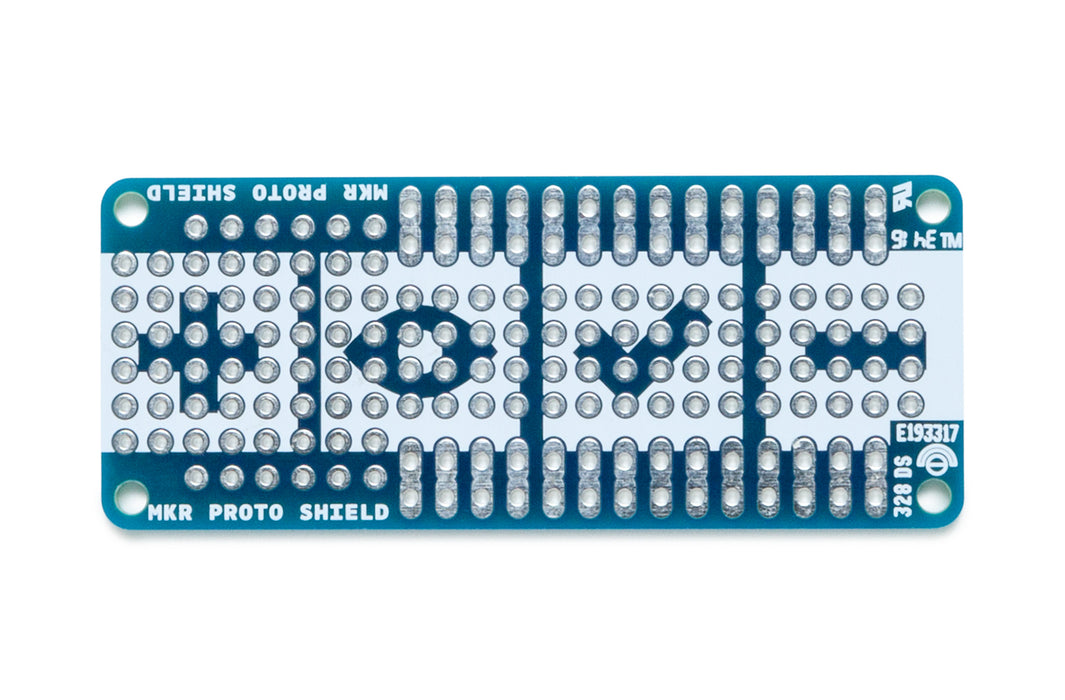
Overview
The MKR Proto Shield is a prototyping shield designed for your MKR board. This shield easily plugs onto your MKR using its provided female/male headers, and offers a duplicate breakout for each pin on the board along with many solderable through-holes on a standard 0.1” grid (2.54mm).
Tech specs
| Digital I/O Pins | 21 |
| PWM Digital I/O Pins | depending on the board |
| Analog Input Pins | 7 |
| Analog Output Pins | depending on the board |
| DC Current per I/O Pin | depending on the board |
| DC Current for 3.3V Pin | depending on the board |
| DC Current for 5V Pin | depending on the board |
| Lenght | 61.5 mm |
| Width | 25 mm |
| Weight | 13 |
Conformities
Resources for Safety and Products
Manufacturer Information
The production information includes the address and related details of the product manufacturer.
Arduino S.r.l.
Via Andrea Appiani, 25
Monza, MB, IT, 20900
https://www.arduino.cc/
Responsible Person in the EU
An EU-based economic operator who ensures the product's compliance with the required regulations.
Arduino S.r.l.
Via Andrea Appiani, 25
Monza, MB, IT, 20900
Phone: +39 0113157477
Email: support@arduino.cc
Documentation
OSH: Schematics
The MKR Proto Shield is open-source hardware! You can build your own board using the following files:
EAGLE FILES IN .ZIP SCHEMATICS IN .PDF







